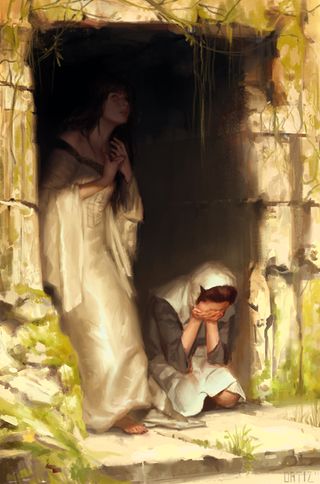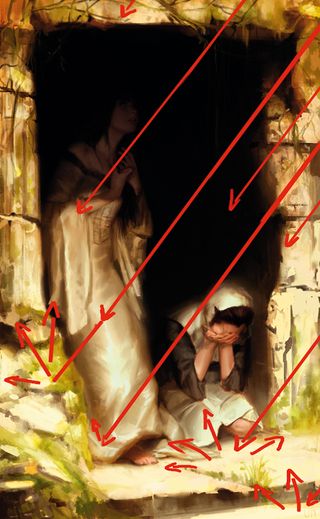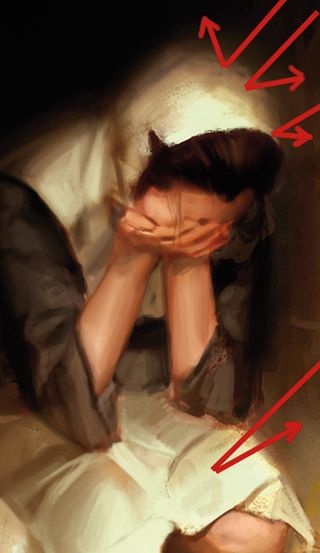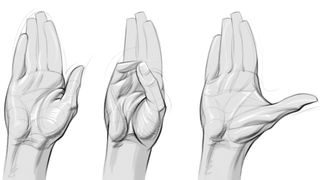The trick to painting light on a bright day
Painting bright, natural light throws up its own unique problems and solutions.

Painting bright, natural light throws up its own unique problems and solutions. There are some key ideas to get a handle on, but the main ones are the relationship between light and shadow, as well as how light reacts to different surfaces and colours.
Free Photoshop brushes every creative must have
A bright, sunny day means that the light is going to be very intense. The intensity of this light will be in relation to the intensity of the shadow. In other words, the stronger the light the darker the shadow. The opposite is also useful for painting light in overcast scenes. As such, the dimmer the light, the closer the shadows will be to the value of the light.
Another thing I like to keep in mind is when light hits a surface it'll either bounce off it or become absorbed. Keep in mind two things: the type of surface and the colour of the surface.
A smooth surface, such as a mirror, will bounce light at the same angle the light is coming from. A bumpy surface – say, stone – will bounce light all over the place irregularly as the light hits the uneven, pitted surface.
As with surfaces and the relationship between light and shadow, there's a simple rule of thumb to remember when painting light hitting a coloured surface.
Essentially, when dealing with painting light on a coloured surface keep in mind that if a warm light hits a warm surface, it'll make that surface look more saturated, whereas if a warm light hits a cool surface, the light will be neutralised and vice versa.
Painting light, especially natural light on a bright sunny day, can seem daunting at first, but by remembering the keys rules I've outlined here you should experience no major problems. Have fun!
01. All seeing sun

The sun is so large that its rays can cover the Earth and not change direction. On a sunny day, if you're outside and the sun is your main light source, the direction of the light can be represented by sets of parallel lines.
The light travels in a uniform direction and its path is predictable. I always like to keep a layer with these lines as a reminder of the direction of the light.
02. All in the bounce

Here, using the parallel lines, I give light to this white ball. If you follow the direction of the rays of light (represented by arrows), you'll notice where the bounce light is affecting the ball.
Both the shadow and reflected light in shadow are affected by the blue in the background, in a similar manner to how the blue of the sky reflects in shadows and bounced light.
03. Make your mark

Early in my paintings I like to create layers with arrows representing the direction of the light. They help me visualise where the light and shadows will be.
For example, here I find where the doorway casts its shadow by adding an arrow with the direction of the light, and following it from the top of the doorway to the point it meets the woman.
04. Harsh or soft?

Here's a detail of the painting. The arrows help me find where the light would hit the top of her cowl and skirt.
Both my light and my surfaces are warm and uneven, so I know it would be a great moment for a soft, diffused light bounce that adds visual interest. Following the arrows enables me keep the lighting in these areas of the painting consistent and realistic.
05. Artist's secret
Be consistent if your goal is to paint sunny light, make sure the relationship between light and shadow are consistent throughout your painting. This means no areas that are bright and sunny, while others that are crazily diffused, like an overcast day!
This article originally appeared in ImagineFX.
Like this? Read these...
- Illustrator tutorials: amazing ideas to try today!
- How to become an artist without a traditional art school
- Photoshop tips, tricks and fixes to try today

Thank you for reading 5 articles this month* Join now for unlimited access
Enjoy your first month for just £1 / $1 / €1
*Read 5 free articles per month without a subscription

Join now for unlimited access
Try first month for just £1 / $1 / €1
Get the Creative Bloq Newsletter
Daily design news, reviews, how-tos and more, as picked by the editors.




